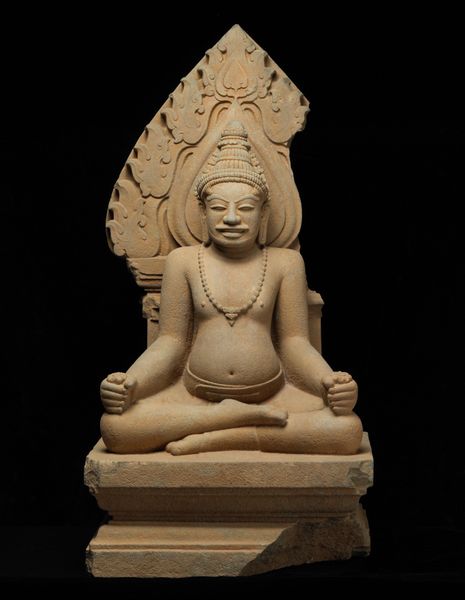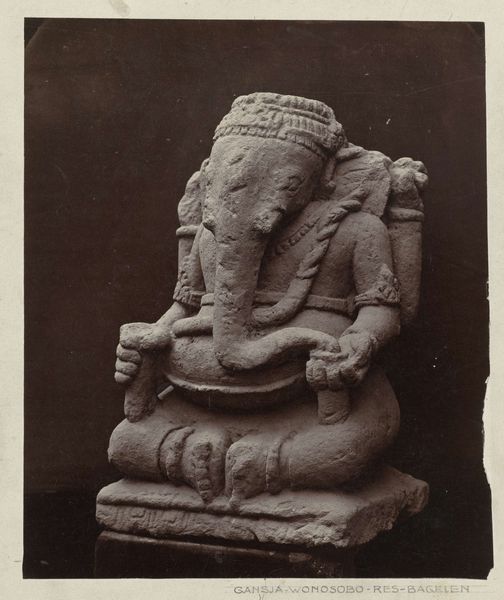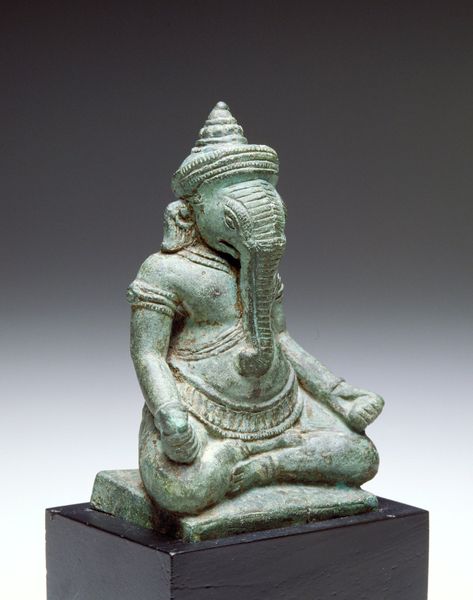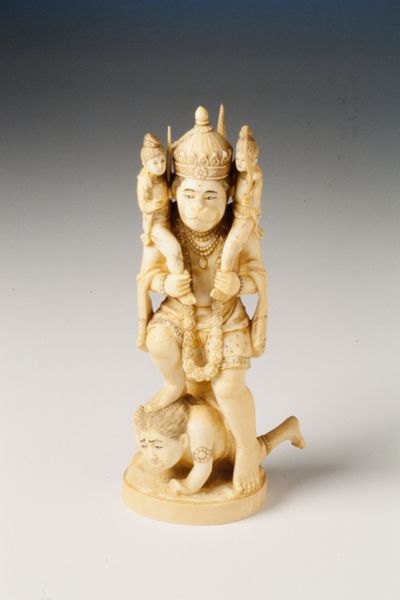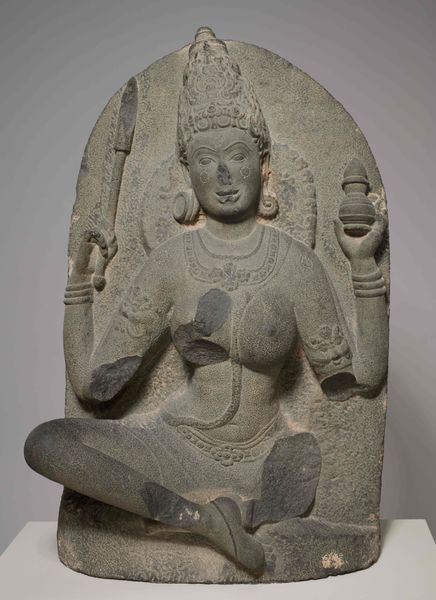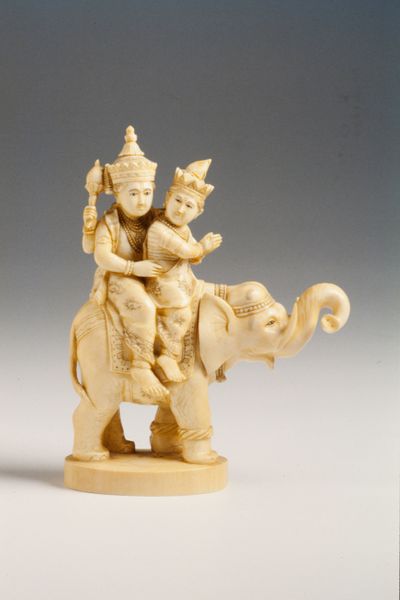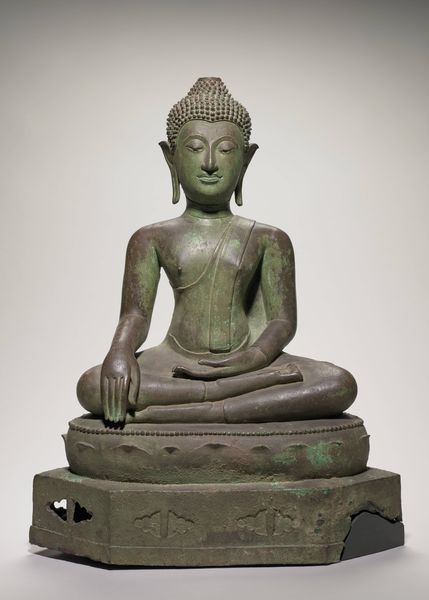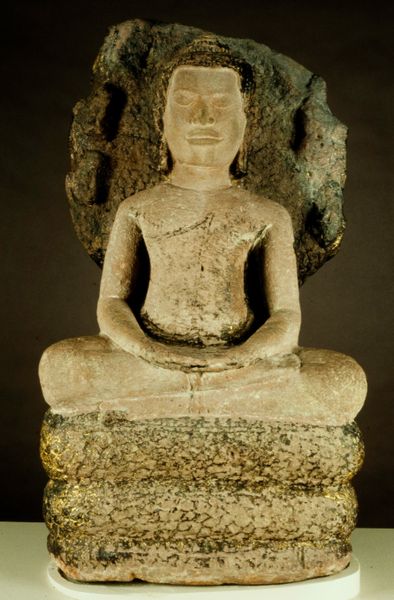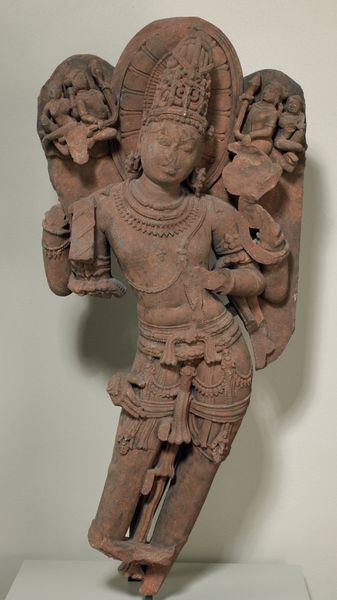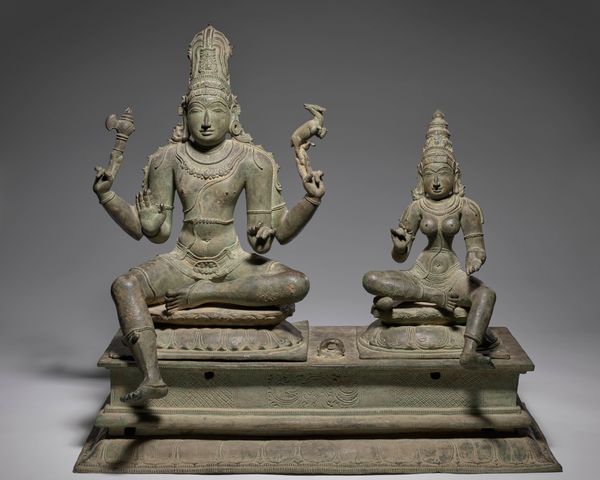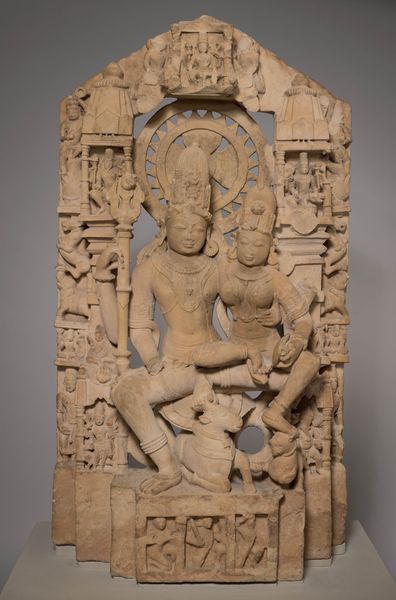
sculpture
#
medieval
#
stone
#
sculpture
#
asian-art
#
figuration
#
sculpture
Dimensions: 34 3/4 x 20 1/2 x 15 15/16 in. (88.27 x 52.07 x 40.48 cm)
Copyright: Public Domain
Editor: Here we have a sculpture of Ganesha, dating from the 10th or 11th century. It’s currently located at the Minneapolis Institute of Art, crafted from stone. There's something immediately grounding about its solid form and the serene expression. What stands out to you when you look at it? Curator: The enduring presence of Ganesha in art signifies so much about memory and cultural persistence. Here, we see the elephant-headed deity, remover of obstacles, seated on a lotus throne, a powerful symbol of purity and enlightenment across many Asian traditions. Note the rosary in one hand and what looks like an axe in another. How do you interpret the pairing? Editor: I guess the rosary signifies peace, whereas an axe seems so… violent in comparison? I'm confused by the contrast, or maybe that contrast IS the point? Curator: Precisely. Consider this: Ganesha's axe isn't about destruction, but severance – cutting through worldly attachments and ignorance. The rosary symbolizes spiritual practice, perhaps the patience needed for transformation. Doesn’t the combination remind us of the complex and at times contradictory paths of human nature, but also how faith can help bridge that gap? Editor: That's insightful; the symbolism seems incredibly layered! Thinking about his role as the remover of obstacles, the axe now makes perfect sense, not as destruction but as a necessary clearing. The rosary being that tool to focus the path. I appreciate you unpacking this cultural memory, and it makes me wonder what else I can interpret myself with just a bit more context. Curator: Indeed. By understanding the visual language, the symbolic grammar, we can appreciate how these images communicate across centuries, reinforcing cultural continuity while offering wisdom to new eyes.
Comments
minneapolisinstituteofart over 1 year ago
⋮
Ganesha, the elephant-headed Hindu god, sits erect on a base shaped as a double lotus. Pot bellied and with his chubby feet pressed together, he eats sweetmeats from a bowl in his lower left hand. Considered to be the destroyer of obstacles, Ganesha is invoked at the launch of any enterprise, from weddings to the opening of a new business. He is believed to remove distractions and protect one from evil. Although this sculpture was created within a Hindu-Buddhist context on the island of Java, Ganesha’s universal charm abounds. Today, his image remains on the currency of Indonesia, home to the largest Muslim population in the world.
Join the conversation
Join millions of artists and users on Artera today and experience the ultimate creative platform.
